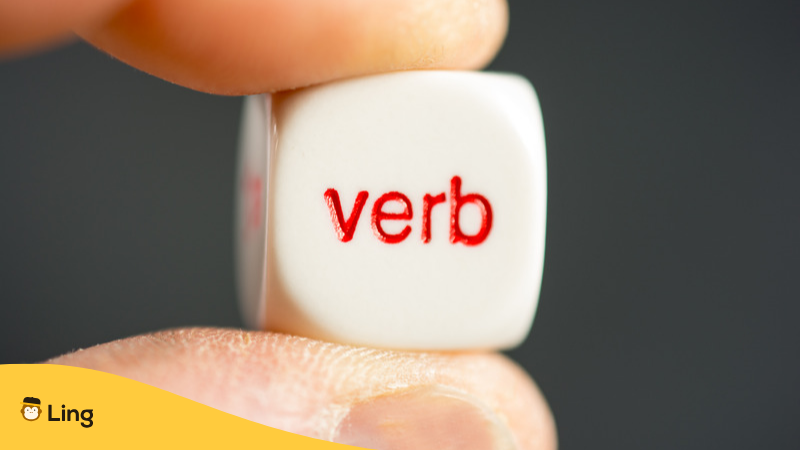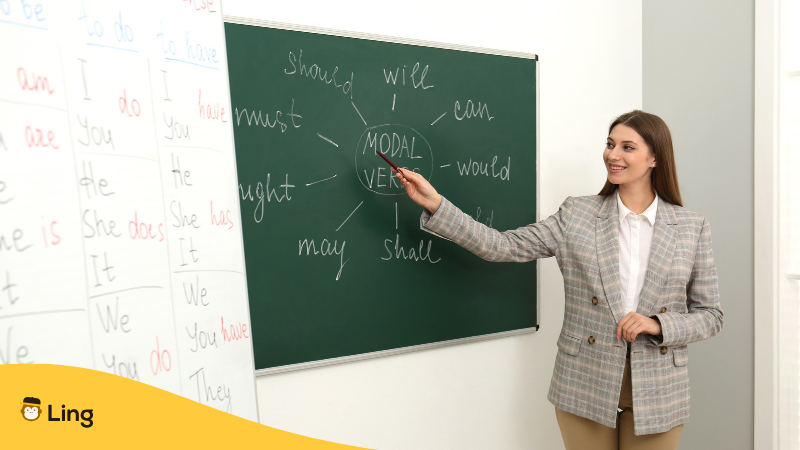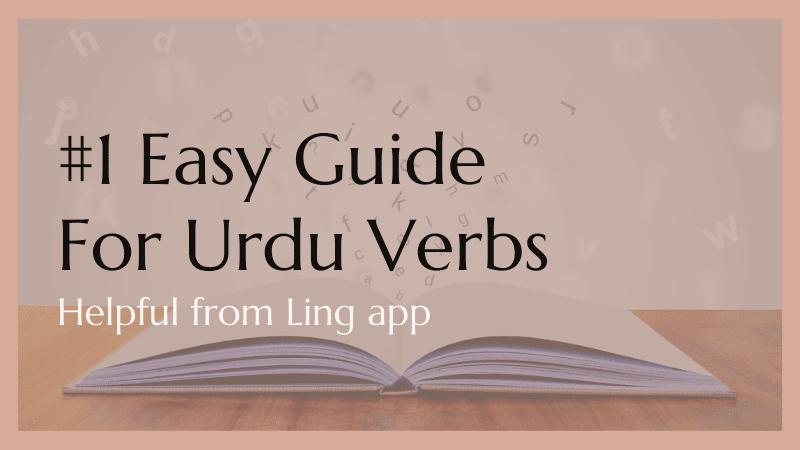Are you aware of the importance of Urdu Verbs? Learning to use Urdu verbs correctly in different sentences is a big step toward fluency.
To have a firm grasp on grammar, introduce yourself with Urdu nouns, pronouns, and adjectives. After mastering these, you will need to know about Urdu verbs (fael) to build entire thoughts and ideas in your sentences.
The Ling app is a purpose-built course that helps you with everything from Urdu grammar to speaking. If you’re eager to learn more about Urdu, then the best time to learn is today. Let’s check out the Urdu verbs first.
The Basic Form Of Urdu Verbs
The last syllables are always present in the Urdu infinitive form. In the most basic forms, all of these verbs express an act of doing, happening, or being in a state. In Urdu, this is the most fundamental definition of a verb. Examples of some Urdu verbs are below.
| English Words | Urdu Words | Pronunciation |
| Walking | چلنا | Chalna |
| Drinking | پینا | Peena |
| Stopping | رکنا | Rukna |
| Eating | کھانا | Khaana |
Variations Based On The Tenses Of The Urdu Verbs
Let’s look at how Urdu verb forms change when the tenses change, keeping the basic structure in mind. Only three Urdu verbs are here, representing three general tenses: present simple, past simple, and future simple. Thus, simple present tense has تا ہے/تی ہے (ta hai) / (ti hai) at the end of a sentence while Past simple tense has یا/یی (ya)/(yi) or یا تھا/یی تھی (ya tha) / (yi thi) representing the sentence structure. However, the Future simple tense happens to have گا/گی (ga) / (gi) at the end of its sentences.

Infinitive verbs in Urdu conclude with the syllables نا (na), although the ending syllables alter depending on the tenses. It also means that there are no irregular verbs in Urdu! Furthermore, the intransitive verb has no use in Urdu, so you do not need to understand the intricacies of transitive and intransitive verbs.
Other such Urdu verbs conjugating in all of the above forms are below.
| English words | Urdu Words | Pronunciation |
| Do | کرنا | Karna |
| Does | کرتا ہے | Karta hai |
| Did | کیا | Kiya |
| Will do | کرے گا | Kerey ga |
Impact of Gender On Urdu Verbs – Grammatical Role
Verbs must match the gender of the words around them in Urdu grammar. Masculine and feminine impact a single word or other plural words. So, it is important to understand proper gender usage implies knowing the nature of the sentence.
Introduce yourself with the following masculine and feminine ending syllables with the Urdu and English translations. Masculine ending syllables include تا ہے (ta hai), یا / یا تھا (ya) / (ya tha), and کرے گا (karay ga.) However, Feminine ending syllables are تی ہے (ti hai), یی/یی تھی (yi) / (yi thi), and کرے گی (karay gi).
Urdu Syntax For Beginners
The SVO (Subject + Verb + Object) sentence structure is commonly used in English. Urdu, on the other hand, has a different sentence structure. Note that the verb, Noun, Pronoun, subject, and object is different in making Urdu sentences. For example, “He eats food” “وہ کھانا کھاتا ہے۔” “Woh khana khata hai.” S+O+V

Helping Verbs In Urdu – Modal Verbs And Auxiliary Verbs
Helping verbs are important because they can shape a sentence correctly. They support the main verb and come in two forms: modal verbs and auxiliary verbs. Auxiliary verbs are here to express the tense or to highlight a point.
There are three basic auxiliary verbs in Urdu, each of which has several forms. Following are some of the auxiliary verbs.
| English words | Pronunciation | Urdu words |
| Am | ہوں | Hoon |
| Is | ہے | Hai |
| Are | ہیں | Hain |
| Was | تھا/تھی | Tha/ Thi |
| Have | چکے ہیں | Chukey hain |
| Did | کیا/کیاتھا | Kiya/ Kiya tha |
| Does | کرتا ہے/کرتی ہے | Kerta hai/ Kerti hai |
Present Participle And Verb Stem
The present participle is a word formed from a verb and has its usage as an adjective or verb tense. The verb of the present participle “laugh” is “laughing.”
A verb stem is a root that cannot stand on its own and carries the word’s tone.
A stem “friend” when added to the derivational suffix -ship to generate a new stem “friendship.” Thus, combining the stem “friend” with various suffixes will generate a new word.

Learn The Urdu Grammar And Language With The Ling App
The Ling app is one of the best language learning portals. With native speakers on Ling App, you can learn the Urdu alphabet, the meaning of a word, and its sound. Moreover, you can also get a solid grasp of the first-person, second-person, and third-person concepts while learning the introduction of Urdu grammar.
Ling App will help you in speaking and writing the Urdu language quickly. It also provides lessons on one language or more than one language. You can also learn the grammar forms in Hindi with Ling App. Create a file on Ling App, and you will get access to video lessons for free.
The best thing about the Ling app is that it keeps you accountable. It will rank you alongside other learners, which shows the progress you’re making on a global scale. It also sends you daily, alarm-like reminders, which have been shown to massively increase your engagement with the app. As you accumulate more additional days on your streak, you will feel compelled to keep going.
So, learn a new language with Ling App and enjoy its fun games and quizzes. Read more articles on the Urdu language via “Urdu words and phrases” and “Urdu greetings.”
Thanks for reading





















